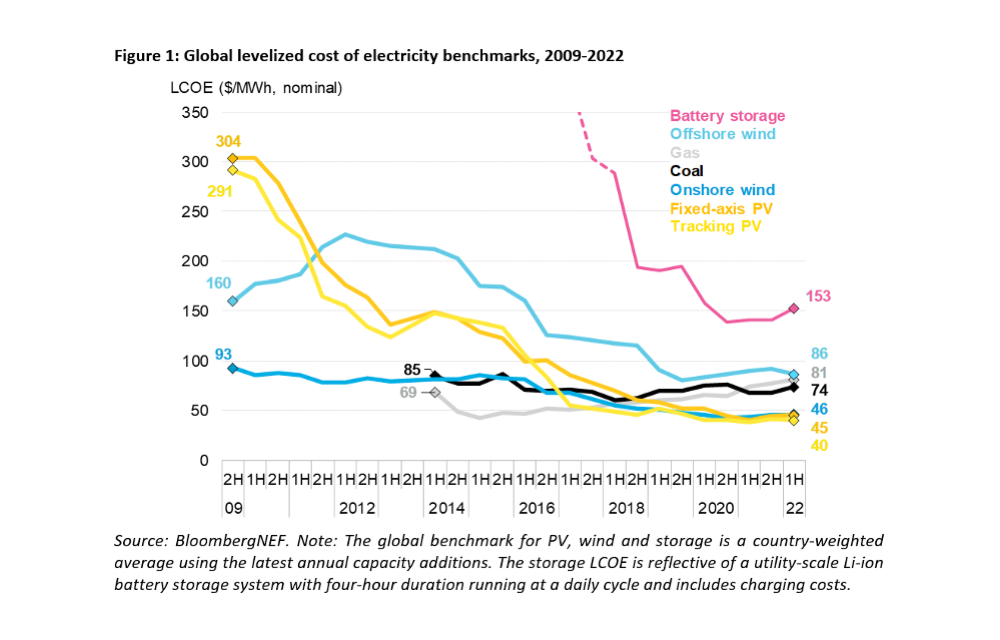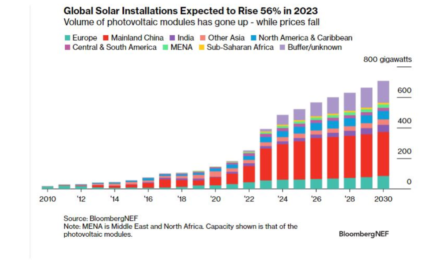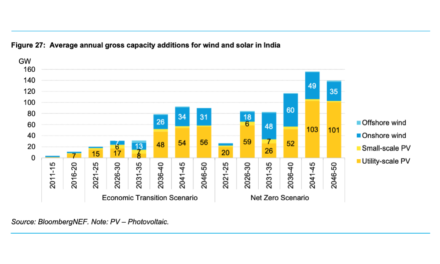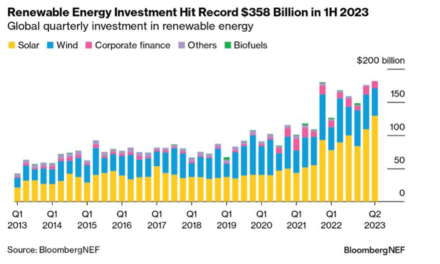- BloombergNEF says the global benchmark LCOE for new-build solar PV and onshore wind has gone back to 2019 levels with the rise in inflation in supply chain and material costs
- Analysts believe this situation is temporary and long-term technology cost decline trajectories should be back soon as demand for renewables continues to grow stronger
- They do add that lesser-developed economies may be disproportionately affected by price hikes, which the world needs to take note of
While renewables get a renewed push post COVID-19 and through the Russian war against Ukraine, supply chain challenges and rising costs have pushed up the cost of new-build fixed axis solar by 14% YoY, said Bloomberg New Energy Finance (BNEF) that worries about lesser-developed economies to bear the brunt the most.
According to the market intelligence firm, global benchmark levelized cost of electricity (LCOE) for both wind and solar PV have gone back to 2019 levels thanks to increase in costs of materials, freight, fuel and labor.
Challenges in the global supply chain ranged from investment deferrals, staff layoffs, early retirement of assets and lockdowns, compounded by disruptions related to logistics and transportation, trade barriers, among others.
While shipping costs were a problem area, labor costs and prices for key raw materials as aluminum, copper, cobalt and molybdenum have also remained elevated.
In H1/2022, the global LCOE for utility scale PV is estimated to have grown to $46.0 per MWh, and for onshore wind it went up to $45.0 per MWh. “Despite losing some ground, this still marks an 86% and 46% reduction since 2010 in nominal terms,” states BloombergNEF. “Global benchmarks conceal a range of country-level estimates that vary according to market maturity, resource availability, project characteristics, local financing conditions and labor costs.”
Yet, the good news is that the cost for power from new-build onshore solar and wind projects is still cheaper than new coal and gas fired capacity, which have power costs of $74.0 per MWh and $81.0 per MWh, respectively.
At the same time, BloombergNEF assures that this does mark a ‘rough patch for renewables, but not an inflection point’. Amar Vasdev, co-author of the report, sees a ‘return to long-term technology cost decline trajectories as demand continues to be strong, supply chain pressures ease and production capacity, particularly in China, comes back online’.
“There is also a risk that lesser-developed economies will be disproportionately affected by price hikes. Leading up to COP27 in Egypt in November, extra attention should be paid to these markets as it will be crucial to make sure they don’t fall behind and lose valuable time in the race to net zero,” explains Global Head of Economics and modeling at BloombergNEF, David Hostert.















